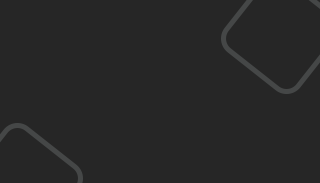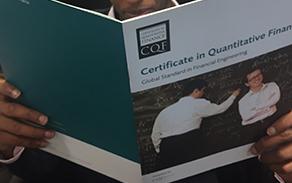A Day in the Life of a Quantitative Analyst

CQF alum, Filipe Mourão, is a Quantitative Analyst for Viridios AI. Filipe holds a B.S. in Mechatronic Engineering and an M.S. in Mechanical Engineering. At Viridios AI, the main goal is to provide carbon market participants with all relevant information (e.g., carbon credit pricing, valuation, and carbon project information) needed to make the most informed decisions. Filipe concentrates on enhancing or creating new quantitative models deployed within the company. We caught up with Filipe to find out more about a typical working day.
I am employed at Viridios AI as a Quantitative Analyst, tasked with the development and improvement of pricing models and methodologies for the Voluntary Carbon Market (VCM). At present, our platform offers pricing information for over 16,000 projects. At Viridios AI, we leverage in-house AI and quantitative models, trained with real-market data, to estimate prices for carbon credit projects based on various characteristics (such as the project's location, activities carried out by the project, and contribution to United Nations Sustainable Goals). My primary focus involves ensuring the proper functioning of all pipelines dependent on these models, addressing any identified bugs, optimizing bottlenecks, and ensuring that the model outputs align with observed market trends. Additionally, I dedicate time each day to explore new models that can be developed using existing data and create new modules in our in-house analytical library to meet the demands of other teams.
Here is an overview of a typical day in my role as a Quantitative Analyst.
09:00 AM - 09:30 AM:
I operate within a fully remote model, giving me the flexibility to determine my optimal working hours. I simply need to adhere to project deadlines and attend scheduled meetings. Usually, my workday kicks off at around 9 AM, when I address emails from colleagues in APAC or Europe and review reports on the carbon credit market before my daily stand-up meeting.
09:30 AM - 10:00 AM:
During my model team's daily standup meeting we discuss task progress, prioritize daily assignments, share deliveries, and seek feedback on proposed solutions or challenges. Currently, my focus lies in enhancing the time-evolving model for carbon projects categorized as 'illiquid'.
10:00 AM - 12:30 PM:
Viridios AI operates with a diverse, global team, and my current manager is in Spain. This period is crucial for addressing pressing tasks that require validation or feedback from him. This week, I am actively participating in a project that Viridios AI is executing for a major consulting firm. In my capacity, I analyze global forward curves of carbon credits and their relationship with a data set of biochar projects’ prices. I am currently dedicated to examining the trends and changes in forward prices related to biochar projects. The goal is to establish a comprehensive methodology for constructing a forward curve. My goal is to have an update ready for him by 12:30 PM each day, seeking feedback and making any necessary iterations before our daily meeting the following day.
12:30 PM - 13:00 PM:
I participate in the daily standup meeting with the market data team which is heavily reliant on the models within my purview. In this forum, I provide updates on the tasks under my responsibility, address inquiries about the model methodology and outputs, and prioritize requests for new modules aimed at enhancing the team's productivity.
Currently, I am working on a visualization module designed to generate a tear sheet that highlights a range of quantitative metrics for an asset, including but not limited to maximum drawdown, annualized return, and annualized volatility. This tool will prove beneficial for the market data team as they undertake the task of validating trends and assessing the performance of carbon assets.
13:00 PM - 14:00 PM:
Time for quick lunch break!
14:00 PM - 18:00 PM:
I rarely have scheduled meetings after 2:00 PM; this enables me to concentrate without interruptions on my research and development tasks. On an average day, I distribute my efforts between research and development. Today, my focus revolves around redesigning a data pipeline for one of our models, incorporating airflow to automate a portion of the workflow. Currently, I am in the process of outlining the new pipeline design. Once I receive approval from my manager, I'll initiate a proof-of-concept project to assess the time-saving potential achieved by automating specific steps.
Subsequently, I shift my attention to composing unit tests for our bond curve bootstrapping module. This module is intended for computing the zero bond rates yield curves, pivotal for subsequent models calculating the forward curves of the VCM. Through systematic and comprehensive testing across various scenarios involving diverse instruments, tenors, and coupon quantities, the objective is to ensure that each section of the code, whether it pertains to a single function or a collection of functions, conforms to the expected behavior and returns the expected outputs.
Lastly, I am experimenting with a potential enhancement for our time-evolving model. I start by making tactical changes on a local branch to be able to test ideas and throw ideas quickly: iteration is key! After finding something that seems to be working, I then generate comparable outputs from both the existing model and the proposed improvement. Utilizing this data, I compile a summary outlining the impact of this change on our platform, including details such as the number of affected projects, the magnitude of the impact, and a comparison with observed results.
Find out more about Quant Finance Careers
If you are interested in becoming a lead software engineer, explore the CQF Careers Guide to Quantitative Finance. Learn more about the skills needed and average salary you can earn in North America, Asia, and Europe for key career paths in quantitative finance.




